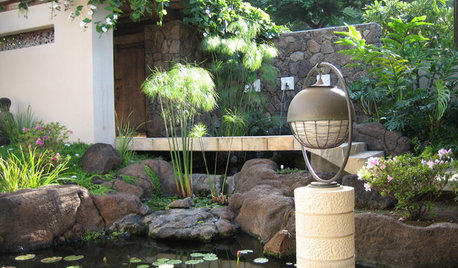I tried the "Search" function unsuccessfully, but since Hortiplex also didn't seem to have much to offer, thought I would bring this up.
I purchased a little plant of this, mixed in among other, mostly culinary, herbs in a local shop. I had tried Stevia once, but found it too temperamental for my taste, and Lippia was promoted as an easy-to-grow, although tender, perennial. Additionally, it had a balanced, trim look about it, and somewhat interesting coloration as well as small but interesting flowers, almost like tiny clover heads. I had a tall, narrow, brown pot that I felt would show it off well, and make good use of its tendency to spread--instead, it could droop over the pot edge.
I had it in mind to possibly sweeten some teas with some of the leaves, as well.
Then I started doing research on the plant. The component that causes the sweet taste seemed to be no problem, but the rather high camphor constituent, which probably explains the claims made that it is useful in bronchitis, was. In large enough doses, camphor can trigger early childbirth or abortion. Something to keep in mind.
I may try a few leaves in tea anyway, but apparently the traditional use where it origionated has always been medicinal rather than culinary. Meanwhile, it is still an attractive plant in its modest little way. I imagine, in a warm enough climate, though, it might spread like mint.
Has anyone here had personal experience with it?











fatamorgana2121
Daisyduckworth
Related Professionals
Allen Landscape Architects & Landscape Designers · Danbury Landscape Architects & Landscape Designers · Ashburn Landscape Architects & Landscape Designers · Glassmanor Landscape Architects & Landscape Designers · Rossville Landscape Architects & Landscape Designers · Taylorsville Landscape Architects & Landscape Designers · Maple Heights Landscape Architects & Landscape Designers · Jackson Landscape Contractors · Concord Landscape Contractors · Cornelius Landscape Contractors · Deer Park Landscape Contractors · La Vista Landscape Contractors · Watertown Landscape Contractors · Sebring Roofing & Gutters · Cincinnati Roofing & GutterseibrenOriginal Author
Daisyduckworth
eibrenOriginal Author
Daisyduckworth
eibrenOriginal Author
fatamorgana2121
eibrenOriginal Author
Daisyduckworth
eibrenOriginal Author